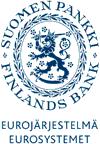 Scientific Monographs, Bank of Finland
Scientific Monographs, Bank of Finland
No E:46/2012:
Monetary Policy in Transition – Essays on Monetary Policy Transmission Mechanism in China
Tuuli Koivu ()
Abstract: China’s economic development has been exceptionally robust
since the end of the 1970s, and the country has already emerged as the
second biggest economy in the world. In this study, we seek to illuminate
the role of the monetary policy in this successful economic performance and
as a part of the extensive economic reforms of the last two decades. The
five empirical essays seek to discover which monetary policy tools are the
most used and most effective for guiding China’s economic development. In
addition, we explore which monetary policy transmission channels are
functioning and to what extent monetary policy impacts inflation and real
economic developments in China. The results indicate that the conduct of
monetary policy in China differs substantially from what is typical for an
advanced market economy, where an independent central bank often aims to
hit an inflation target by simply controlling the target interest rate.
First, China’s monetary policy toolkit is highly diverse. Besides a
collection of administrated interest rates, it contains quantitative policy
tools and direct guidelines. Second, China’s central bank is not
independent in its decision-making. For these reasons, it is exceptionally
challenging to measure the monetary policy stance or to distinguish
monetary policy from other macroeconomic policies in China’s case. This has
been taken into account in this study by using a variety of monetary-policy
indicators. Our results suggest that China’s monetary-policy implementation
and its transmission to the real economy still rely heavily on quantitative
policy tools and direct guidelines; interest rates play a much smaller
role, in terms of both usage and effectiveness. Overall, our findings
suggest that the direct link between monetary policy and real economic
performance is weak in China. On the other hand, this study clearly shows
that monetary policy has played a key role in price developments, which
tells us that monetary policy has been an important factor in China’s
economic success.
Keywords: China; monetary policy; economic growth; inflation; exchange rates; (follow links to similar papers)
JEL-Codes: E50; P30; (follow links to similar papers)
190 pages, October 26, 2012
Before downloading any of the electronic versions below
you should read our statement on
copyright.
Download GhostScript
for viewing Postscript files and the
Acrobat Reader for viewing and printing pdf files.
Full text versions of the paper:
E46.pdf 
Download Statistics
Questions (including download problems) about the papers in this series should be directed to Päivi Määttä () or Minna Nyman ()
Report other problems with accessing this service to Sune Karlsson ()
or Helena Lundin ().
Programing by
Design by Joachim Ekebom
 Scientific Monographs, Bank of Finland
Scientific Monographs, Bank of Finland
 Scientific Monographs, Bank of Finland
Scientific Monographs, Bank of Finland